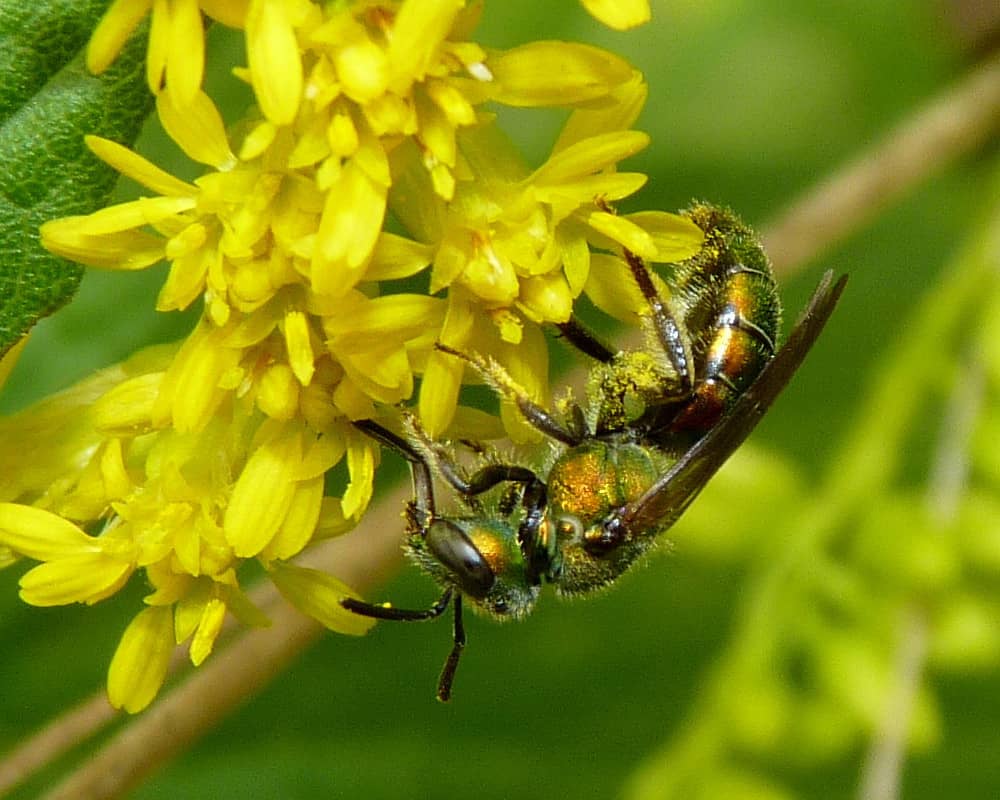
Green orchid bee; Euglossa dilemma
With glossy metallic green bodies and dark wings, these unique solitary bees are native to Central America, with a range from Mexico to Costa Rica. As the name suggests, orchid bees have a symbiotic relationship with orchids. Unlike most other bee species, the male bee is the one that pollinates; he collects fragrances from various orchid plants, storing pollen and fragrances on his hind legs. Visiting from flower to flower pollinates the orchids, and the male bee uses a variety of scents to entice a female bee to mate.
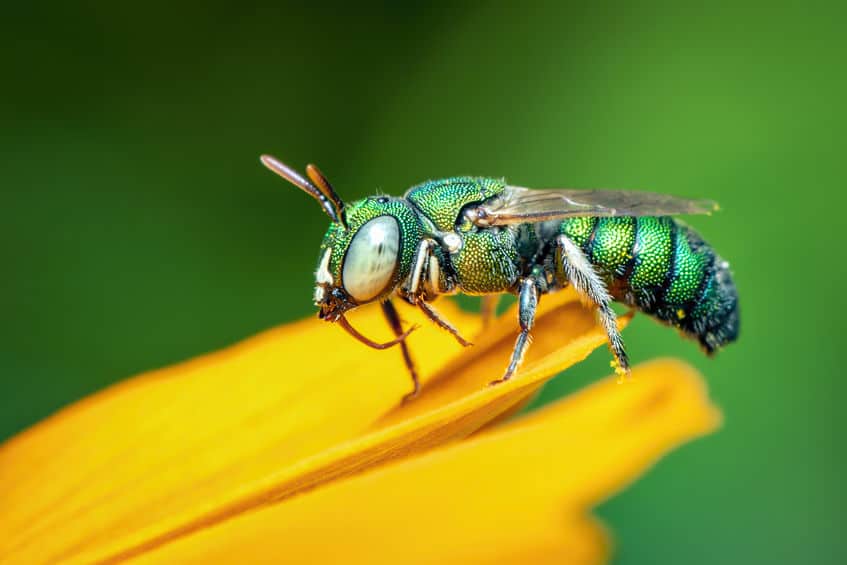
Great green sweat bee; Agapostemon texanus
Endemic to North America, the great green sweat bee has an appearance similar to that of a wasp, with stark yellow and black stripes across its abdomen. Its head and thorax, however, are a shiny emerald green. Sweat bees are attracted to the sweat of humans and other animals; the salt contributes to their nutrition. They are considered communal bees; a single entrance to a ground burrow is shared by several female bees, but the burrow tunnels off into separate paths in which each bee will lay her eggs and care for her own brood. They emerge in early summer to lay eggs and collect pollen and nectar. The larvae will hatch in the fall, and the young females will mate before going into hibernation.
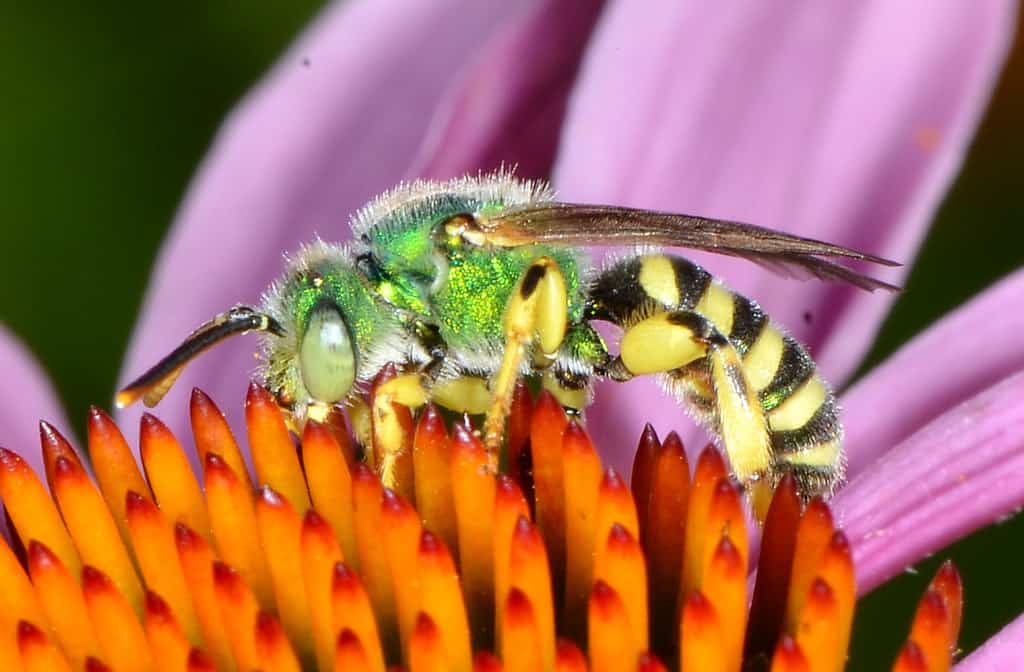
Green carpenter bee; Xylocopa aerata
Despite the name, this bee may appear to be bluish or purple. Their shiny green body is dark in color, and the metallic shine can give way to differences in colors. As with most carpenter bees, this solitary species digs tunnels into wood to make nests for larvae. The green carpenter bee is from South Australia and is a valuable pollinator for native plants in the region. Several bees may use the same tunnel, living in communes similar to the great green sweat bee.
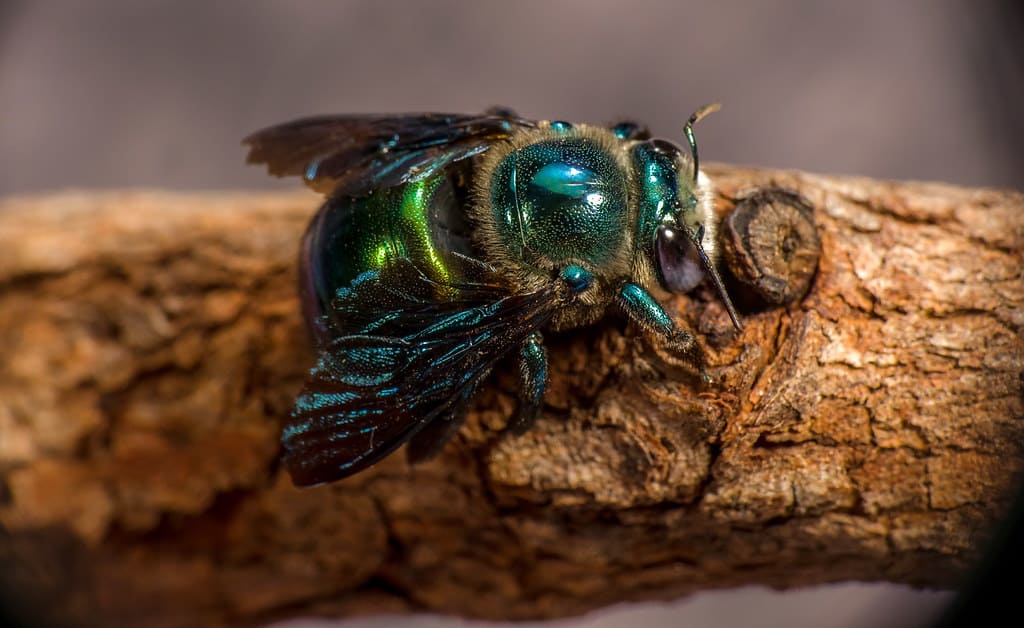
Metallic green bee; Augochloropsis metallica
The Augochloropsis genus is similar to that of the Agapostemon genus, both containing sweat bees. The metallic green bee is light green, with the coloring covering its whole body. Native to North America, these bees are solitary ground nesters with a nesting system unique to their tribe. A tunnel is dug straight down and then veers off horizontally. Cell chambers are then dug pointing down off this main tunnel.
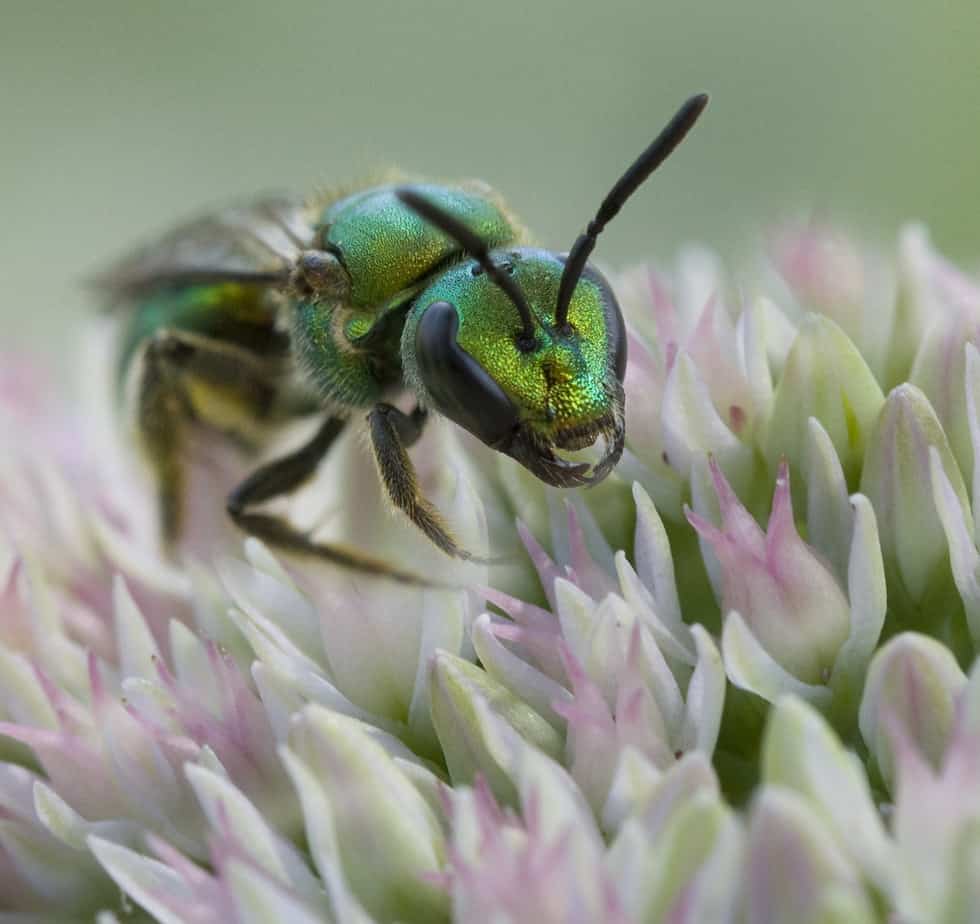
Pure green sweat bee; Augochlora pura
Sweat bees are infamous for their bright colors, often green or blue. The pure green sweat bee is no exception, with an almost wasp-like body and an exoskeleton that is primarily green with tints of teal. It nests in rotting logs in the Eastern US, using burrows produced by other insects and then building on them. They are solitary bees that do not tend to live cooperatively; females may attack other females within their nest. Males will nest in groups outside the nest at night, often huddled closely for warmth. The pure green sweat bee is known as a common and prolific pollinator in the Eastern states and is even found to make up over 90% of the bees in certain woodland areas.
